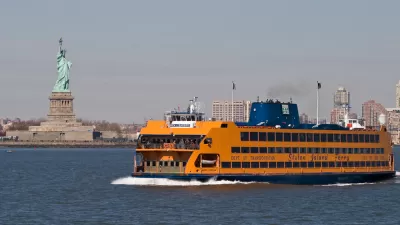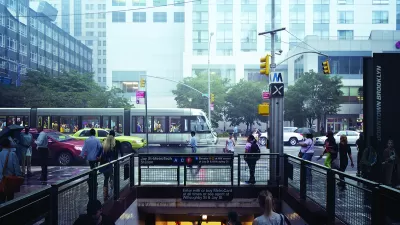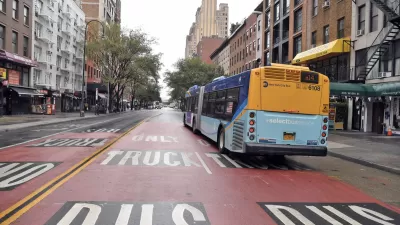NYC Ferry, which opened in May 2017, would double in size if Mayor Bill de Blasio's budget proposal moves forward.

[Updated: This article has been updated to correct an error in the headline.]
New York City Mayor Bill de Blasio has announced a new budget proposal that would allocate $300 million to double the size of the NYC Ferry system, reports Will Bredderman.
The idea of expanding the NYC Ferry system has already met with criticism for taking focus away from needed improvements at the MTA.
But the New York City Economic Development Corp., which de Blasio controls, says that each passenger's voyage—though priced at $2.75 to match subway and bus fares—will still require a $6.60 taxpayer subsidy. This is several times larger than the government's cost for each ride on the subway system, which carries between 5 million and 6 million passengers every day. Critics also say the ferries favor waterfront communities that are often more affluent than the average inland enclave.
While Mayor de Blasio has found this $300 million for a ferry service he obviously sees as part of his legacy, his administration remains resistant to providing additional city support for the state-run MTA.
The council has pushed the mayor to set aside $212 million from the budget to finance reduced-cost MetroCards for low-income New Yorkers. The mayor again called this a "good idea," but dismissed it as extra city funding for the MTA, which he finds especially unpalatable after the state budget forced his administration to cough up $418 million toward an "emergency" repair plan.
The proposed $300 million in funding for NYC Ferry would fund the acquisition of "350-passenger vessels, improvements to piers and docks, and a second facility for boat repairs and maintenance," according to Bredderman. The article includes more details about the results of NYC Ferry service in its first full year of operation.
FULL STORY: De Blasio tries to justify sinking another $300 million into ferries

Trump Administration Could Effectively End Housing Voucher Program
Federal officials are eyeing major cuts to the Section 8 program that helps millions of low-income households pay rent.

Planetizen Federal Action Tracker
A weekly monitor of how Trump’s orders and actions are impacting planners and planning in America.

Ken Jennings Launches Transit Web Series
The Jeopardy champ wants you to ride public transit.

Rebuilding Smarter: How LA County Is Guiding Fire-Ravaged Communities Toward Resilience
Los Angeles County is leading a coordinated effort to help fire-impacted communities rebuild with resilience by providing recovery resources, promoting fire-wise design, and aligning reconstruction with broader sustainability and climate goals.

When Borders Blur: Regional Collaboration in Action
As regional challenges outgrow city boundaries, “When Borders Blur” explores how cross-jurisdictional collaboration can drive smarter, more resilient urban planning, sharing real-world lessons from thriving partnerships across North America.

Philadelphia Is Expanding its Network of Roundabouts
Roundabouts are widely shown to decrease traffic speed, reduce congestion, and improve efficiency.
Urban Design for Planners 1: Software Tools
This six-course series explores essential urban design concepts using open source software and equips planners with the tools they need to participate fully in the urban design process.
Planning for Universal Design
Learn the tools for implementing Universal Design in planning regulations.
Ada County Highway District
Clanton & Associates, Inc.
Jessamine County Fiscal Court
Institute for Housing and Urban Development Studies (IHS)
City of Grandview
Harvard GSD Executive Education
Toledo-Lucas County Plan Commissions
Salt Lake City
NYU Wagner Graduate School of Public Service





























